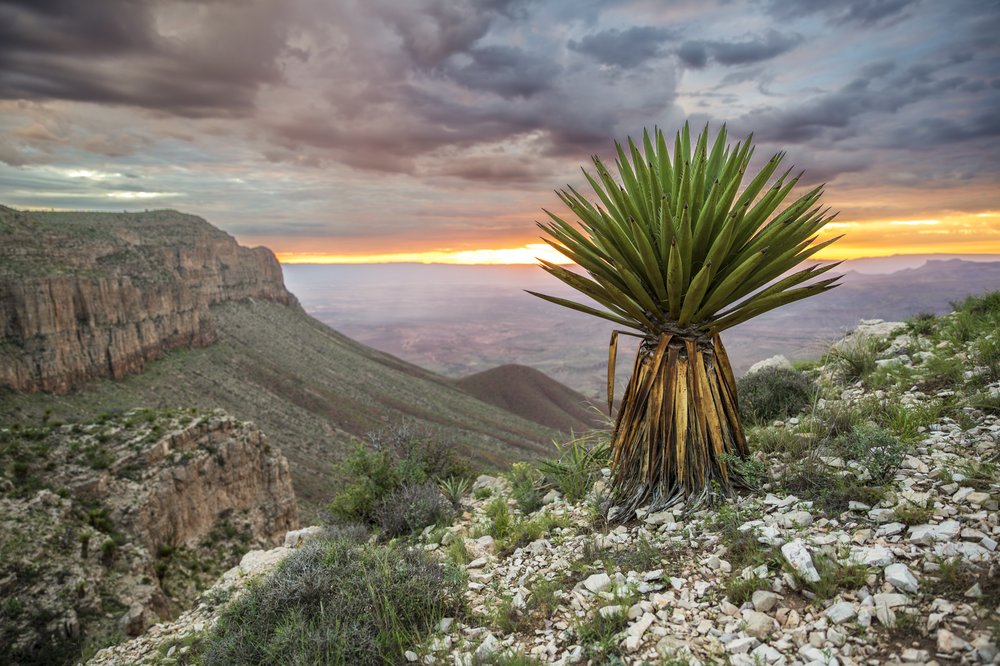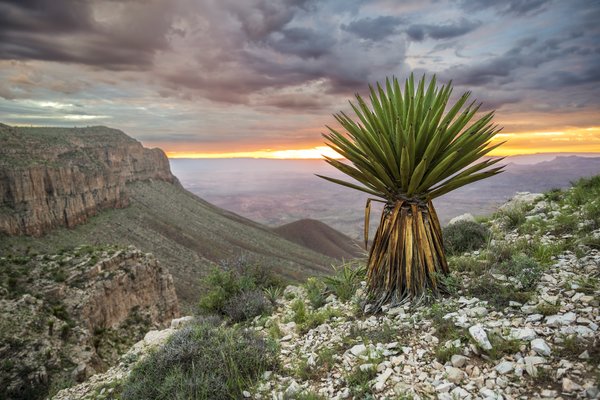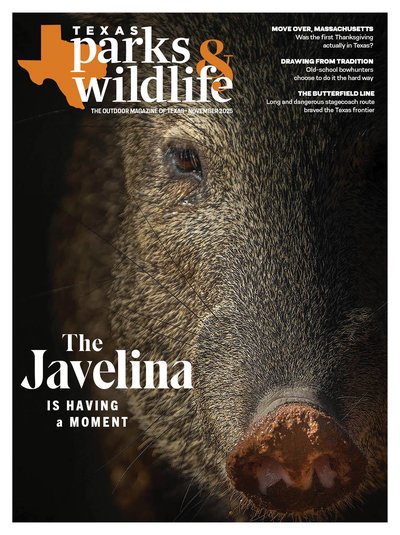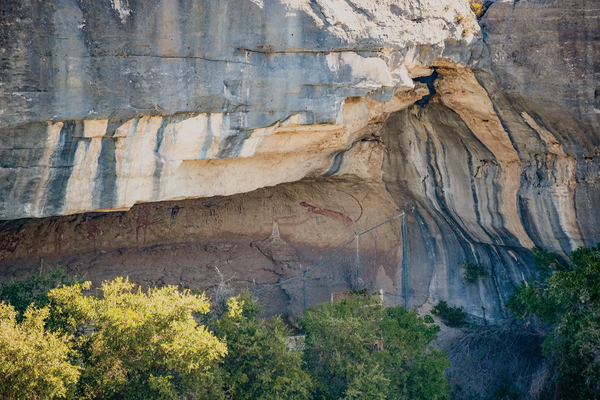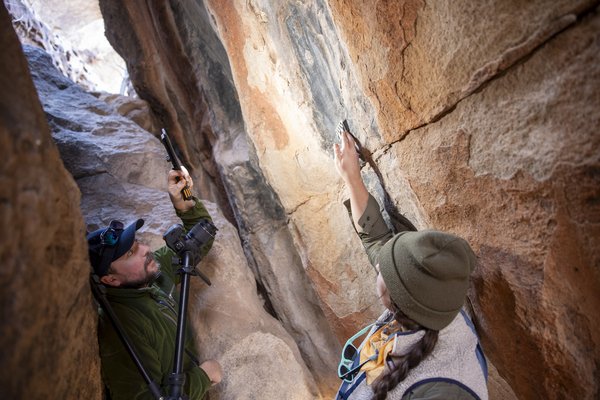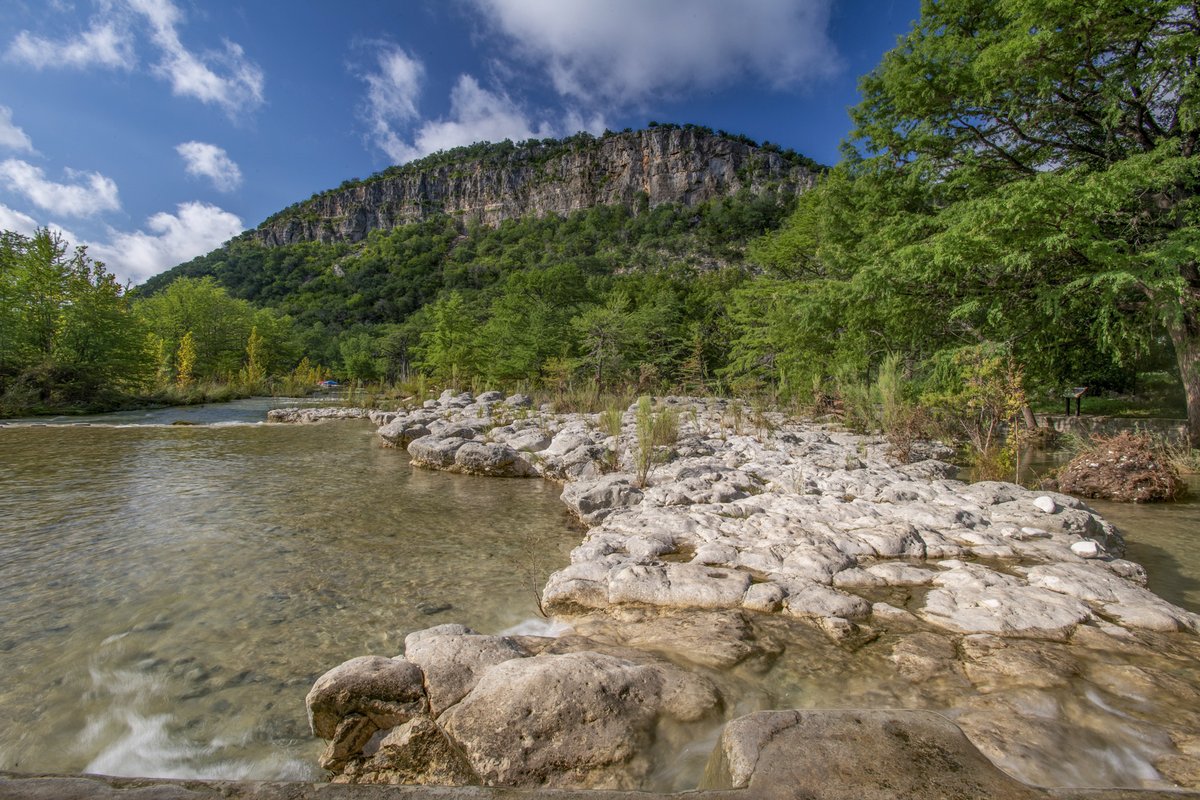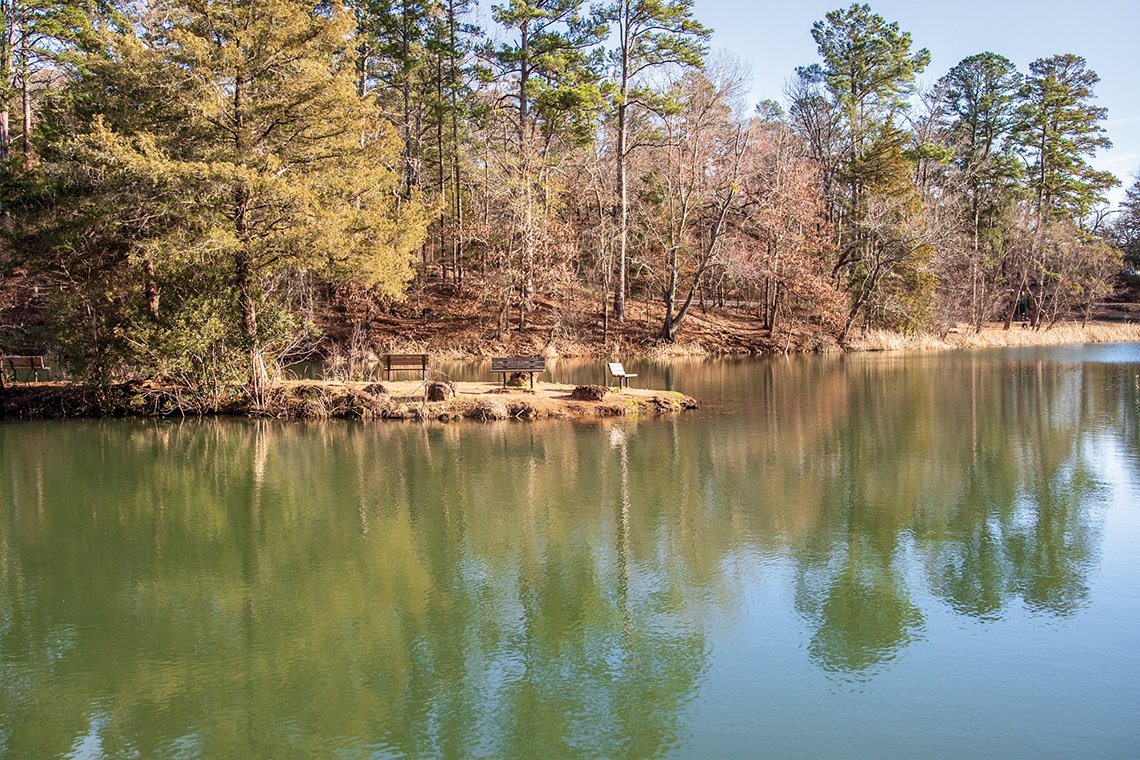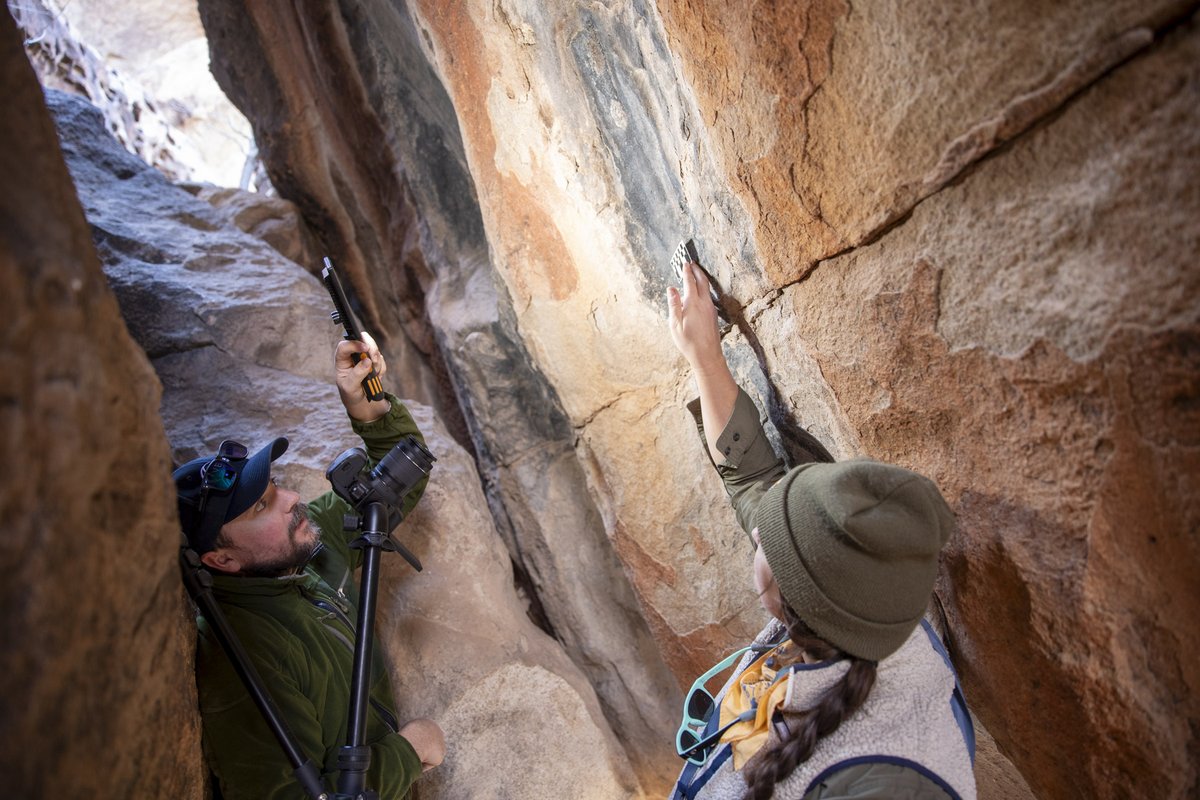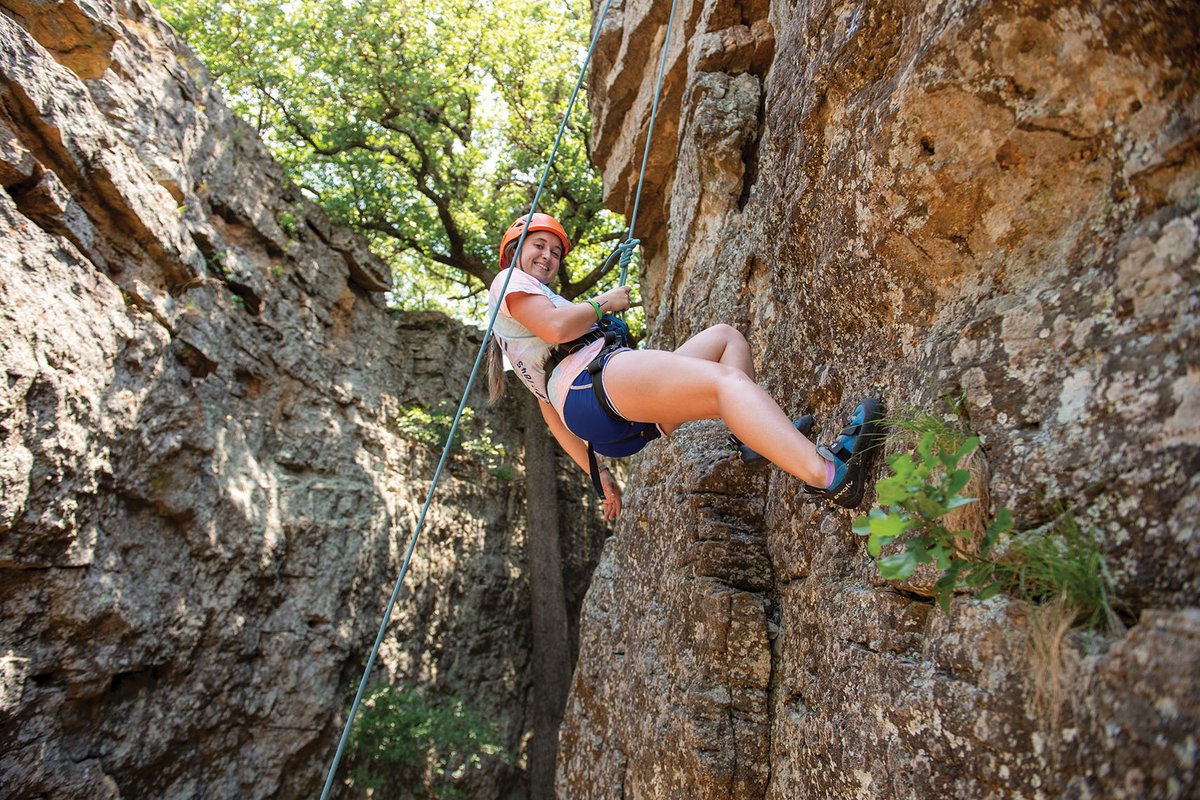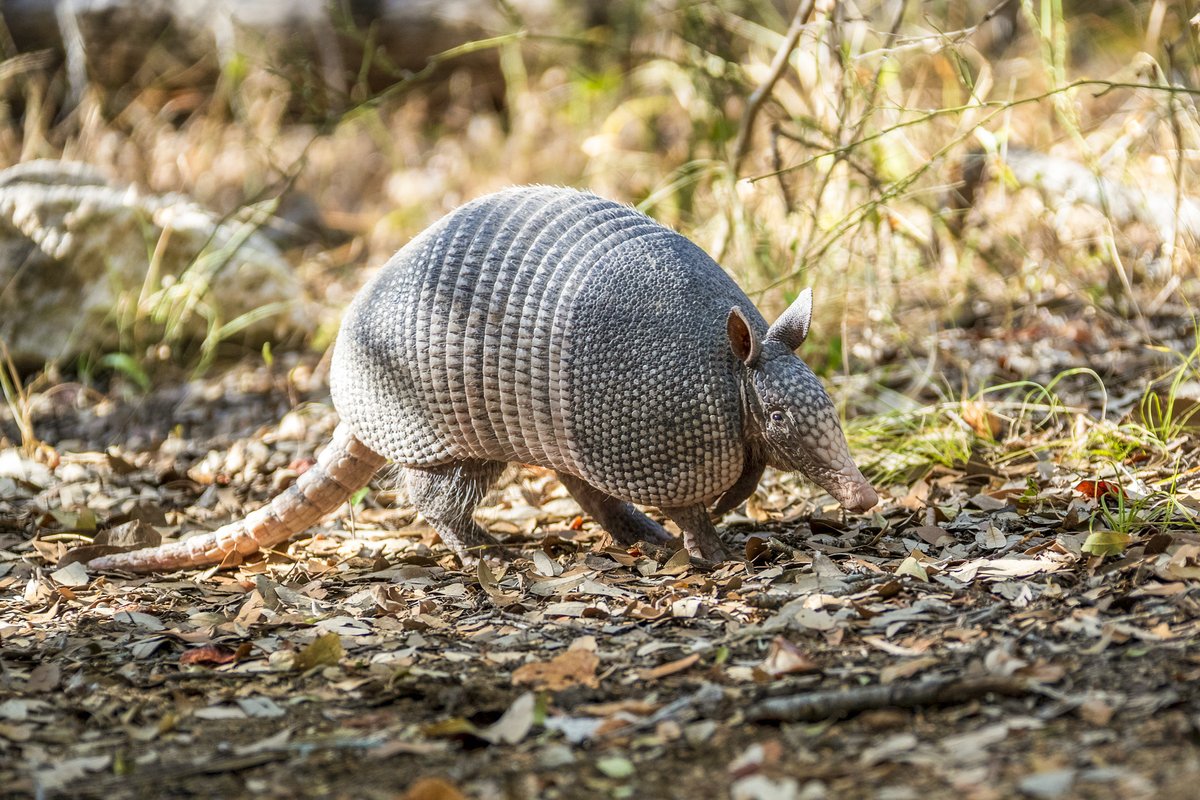ONCE A WEEK, Josh Cross dons his cowboy hat and boots and makes the long and lonely drive to work. From Alpine, where he lives and works most of the time, it’s a three-hour trip to Sierra Diablo Wildlife Management Area, just north of Van Horn. These mountains are his second office. The rugged slopes are a far cry from the cubicles where many of us work. When he arrives at the vast expanse of wilderness, there’s not even internet service to hop online. He works better that way.
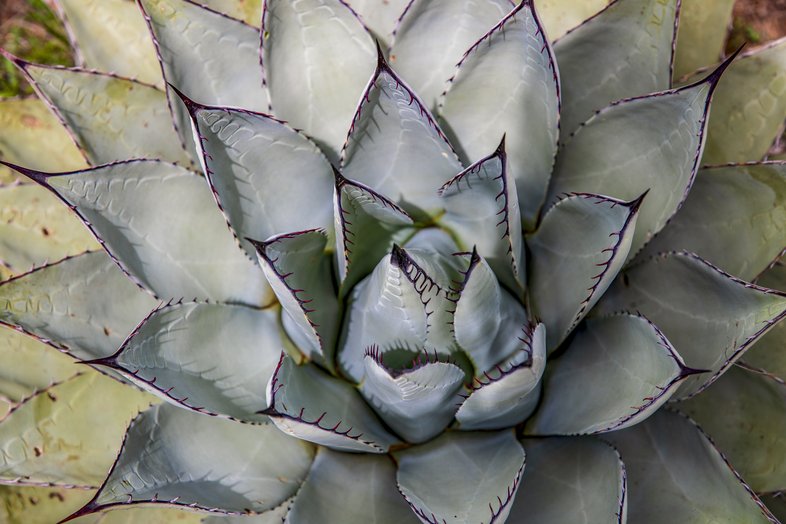
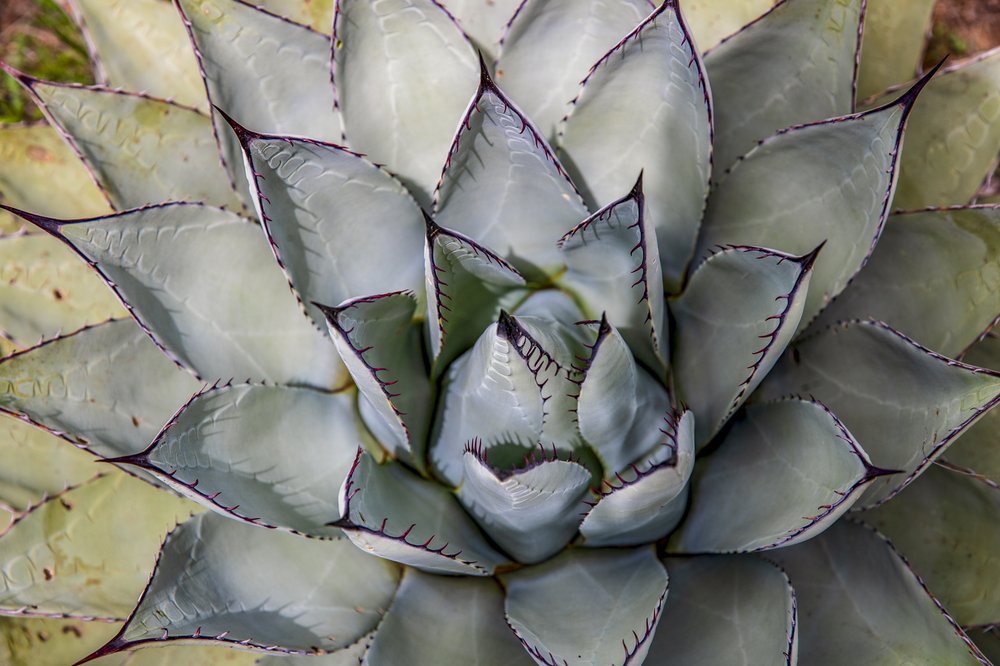
The harsh desert climate allows hardy plants like this agave to thrive.
The harsh desert climate allows hardy plants like this agave to thrive.
As a wildlife biologist for the Texas Parks and Wildlife Department, it’s his job to manage the land for target species. At Sierra Diablo, bighorn sheep are his primary preoccupation. In 1945, when TPWD acquired nearly 12,000 acres for the WMA, this unforgiving landscape was singled out to serve as a home for the state’s last remaining bighorn sheep. In the 80 years since then, maintaining the WMA’s resident bighorn population has been a battle with many victories and defeats.
In the 1950s, the last sighting of Texas’ native desert bighorn occurred in these mountains before the animal was wiped out from the state. In the mid-20th century, the state began a captive breeding program at Sierra Diablo. That program was discontinued in the 1990s because of issues with disease containment, but the 40-acre complex of tall metal fences is still there.
“Does this make you think of Jurassic Park?” Cross asks as we pass through the rusted iron gates.
It’s been something of a miracle to restore desert bighorn sheep to Texas, and subsequent reintroduction efforts have made progress. As of April 2025, there were 225 bighorn sheep at Sierra Diablo and about 1,000 across West Texas.
But, unlike the high-tech of Michael Crichton’s mad scientists, Cross has little more than what’s already on the land to care for his resident bighorns.
“My job is half science and research and half serving as a land manager for the state,” Cross explains. “What land managers do is manipulate the resources available on the landscape.”
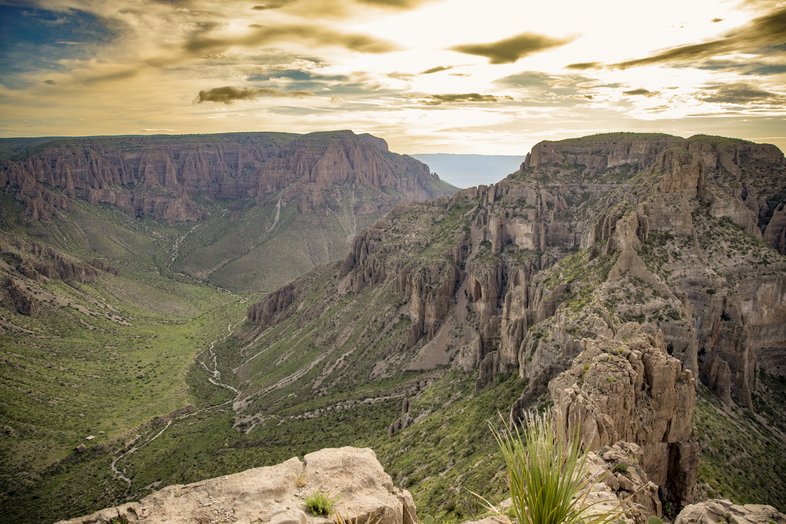
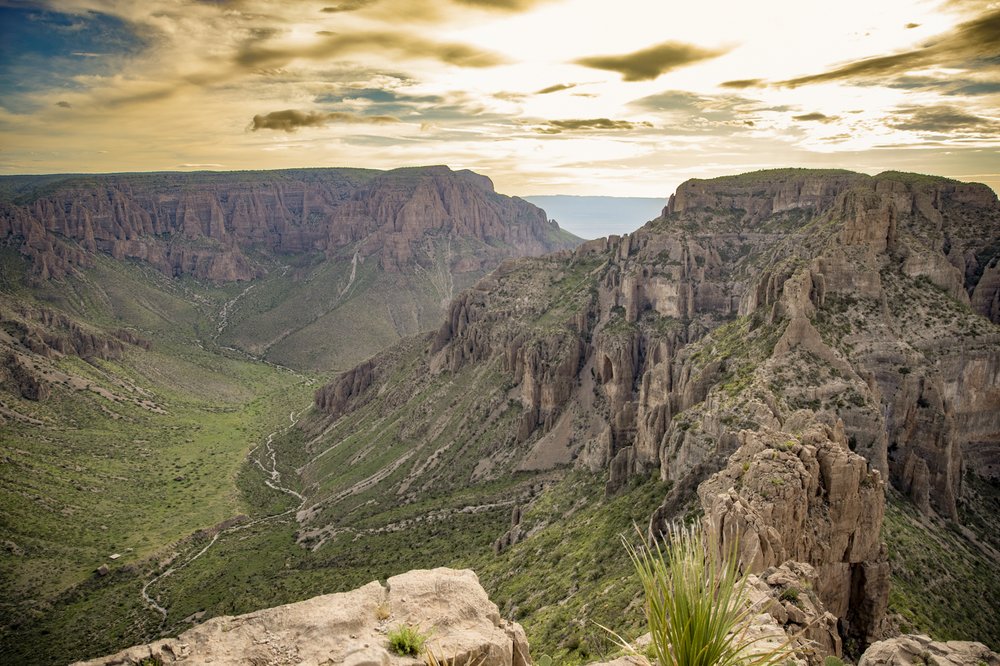
The WMA's rugged mountains are home to bighorn sheep.
The WMA's rugged mountains are home to bighorn sheep.
In West Texas, where the sparseness of the landscape dominates, water is the chief concern. As such, Cross spends his days making sure the WMA’s rainwater collection systems
and troughs are running smoothly. By installing water sources along the rugged rim country, Cross entices the sheep to stay in the area.
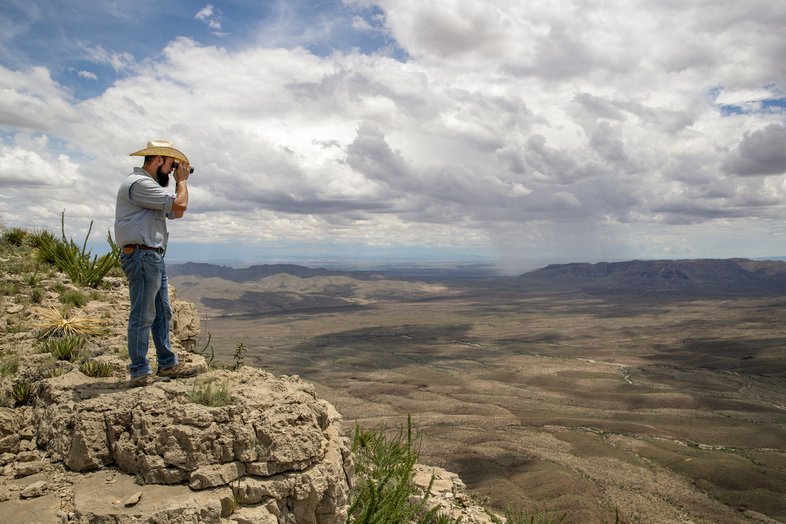
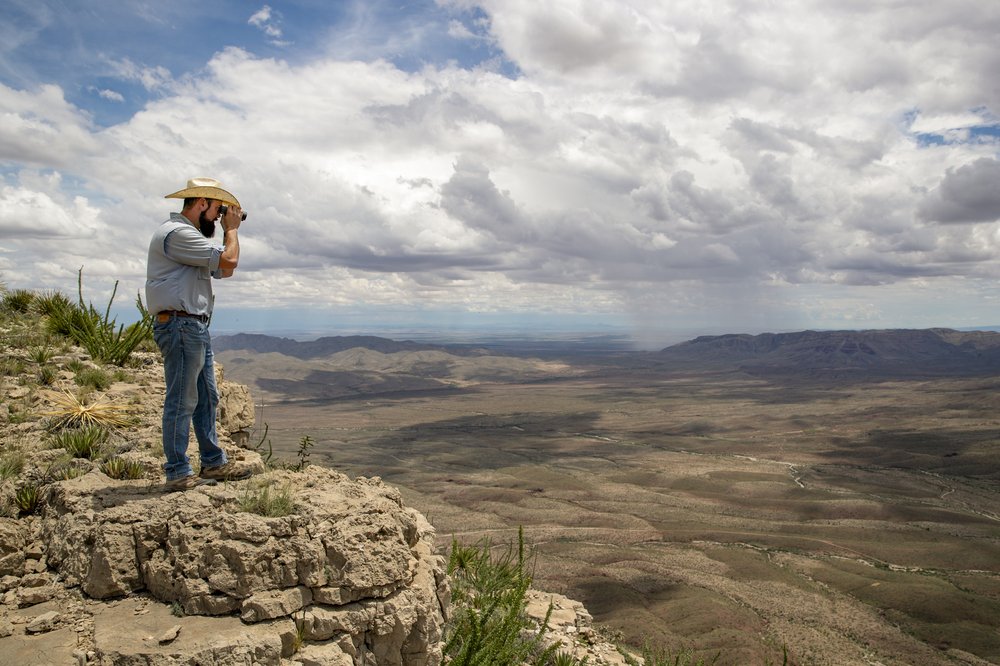
Sierra Diablo offers stunning West Texas landscapes.
Sierra Diablo offers stunning West Texas landscapes.
A Journey Through Time
The Sierra Diablo Mountains extend north and south along the Hudspeth-Culberson county line, straddling the border between Central and Mountain time. As I travel with Cross around the WMA to access hard-to-reach canyons, our clocks hop back and forth through time.
Likewise, the journey catapulted us through time as I saw bighorns frolicking on orange and pink mountain slopes in the golden morning light — as they have for many thousands of years. It’s a view dotted by ocotillo, tarantula hawks and other wonders of the desert.
In addition to bighorn sheep, mule deer and elk, the Sierra Diablos are home to a multitude of other species big and small. Mountain lions prowl beneath the pinyon pines. Jackrabbits and scaled quail dart between pockets of brush. All sorts of snakes wind their way across the dusty desert floor. On our trip, we see a gopher snake and a Mojave rattlesnake, which packs particularly deadly venom and is rare in this part of the Chihuahuan Desert. Above us, a phainopepla, which looks like a goth cardinal (black mohawk and all), slinks through the sky.
Although the desert scrub is easy to dismiss for the untrained eye, a closer look reveals a surprising diversity of plant life. Species like cliff fendlerbush and skeleton-leaf goldeneye provide a tasty meal for browsers on these desolate cliffs.
What To Do
Hunting the Sierra Diablos
The WMA is closed to the general public, except for the lucky few who are selected to participate in its drawn hunts for mule deer and javelina via TPWD’s annual public hunting lottery. Occasionally, Sierra Diablo WMA will also host a desert bighorn sheep hunt through TPWD’s Big Time Texas Hunts program.
Elk, though a rare sight on the WMA, are on the hunting docket because they’re considered an exotic species in Texas. Although the Lone Star State was once home to a different species called Merriam’s elk, it went extinct around 1900. The elk there now are Rocky Mountain elk imported by private landowners over the years that have escaped onto public lands.
